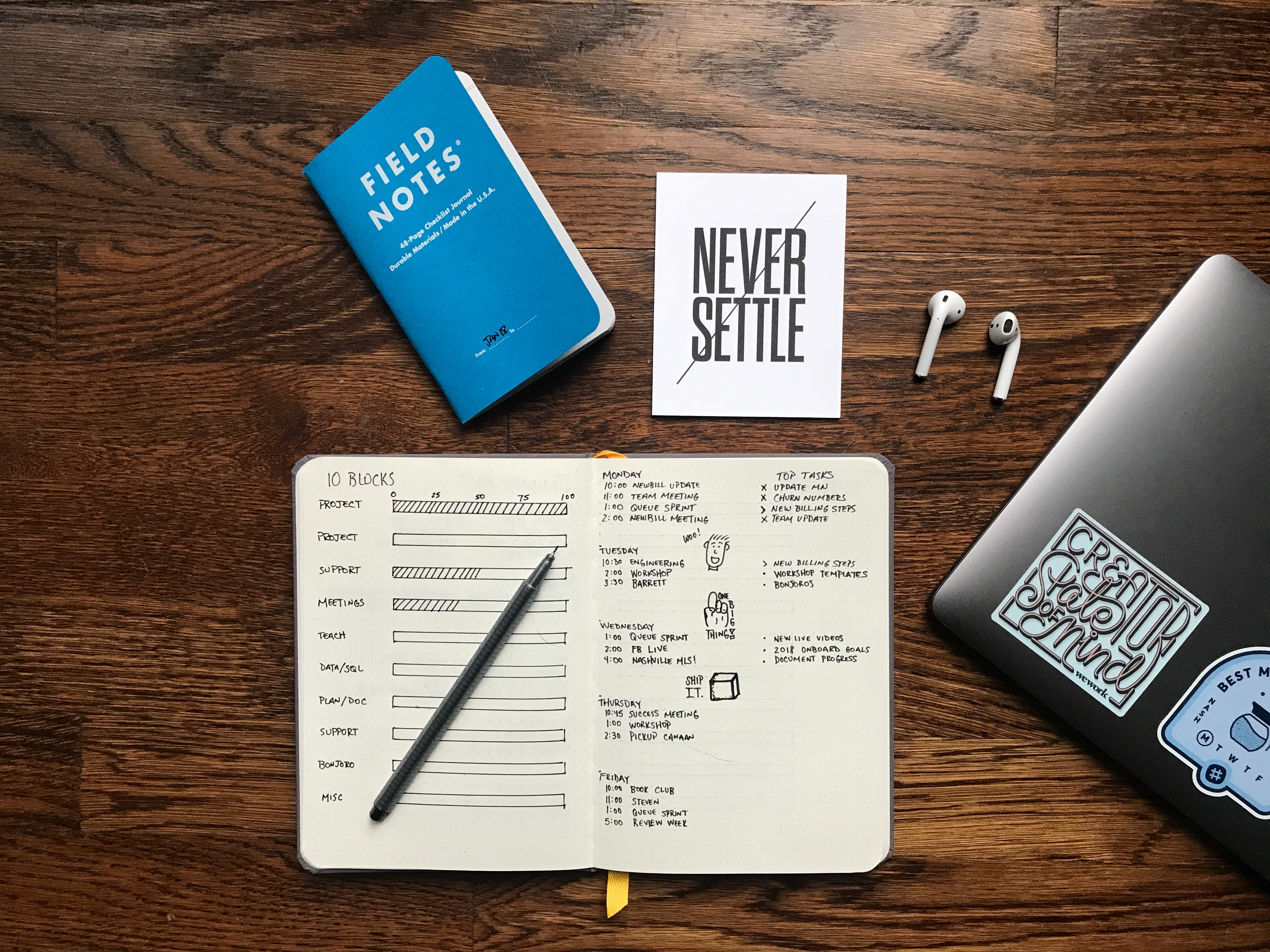
Bullet Journaling for Productivity
If you’re anything like me, as the end of January approaches your many New Year’s resolutions begin to slip by the wayside, but it doesn’t have to be this way! One of my resolutions this year was to put systems into place to allow me to be more productive while working. I recently tried bullet journaling and wanted to share some of the things I have learned about this system so that you too can keep going strong on your resolution if you have the same goal. This method has already helped me to be more productive at work and can help you to spend less time while getting more done whether in the lab, writing, or even teaching.
What is bullet journaling?
Bullet journals can mean a lot of things to a lot of different people and it can be difficult to explain them because they are so customizable. Overall, bullet journaling is great for people who like using to-do lists, goal setting, and planners. But, they can also be great for people who want to get more organized or who want to journal but struggle to stick with it.
Essentially, with bullet journaling you will take a notebook and create an outline that you will then fill in. There are typically five parts that will often appear in bullet journal including: an index, which is like the table of contents, a daily log, which has tasks for the day, a monthly log which has tasks for the month, a rapid log, which uses symbols to help you get things done, and a future log, with long term goals in a year-at-a-glance format. With bullet journaling the idea is to write down short thoughts rather than spending time drafting long sentences.
One of the perks of a bullet journal is that it can serve as a planner and a diary, all in one. You can use it to record what you need to do and can also look back on past entries to see what you have done.
How can bullet journaling increase productivity?
As you may have begun to see during the explanation, bullet journaling can make you more productive by giving you a place to organize what needs to be done so that nothing slips through the cracks. In addition, taking time to write in your journal gives you a moment to be more mindful and self-aware. By writing things down, you may be more easily able to prioritize what you need to do.
Bullet journaling can also become a great way to kickstart your day or serve as a way to wind down and prepare for the day ahead. Personally, I find it much easier to relax after work after I have created an organized list of what I plan to do the following day. This has allowed me to enjoy my free time more and be more productive during the day.
One of the biggest organizational problems I have faced in the past is that I have tried to do too many things and lost interest. For me, it just isn’t practical to keep a calendar, a diary, to-do lists, and a goal sheet. However, when I combined all of these things into a bullet journal it became fun and easy to manage. I also have saved a lot of time by using only one organizational platform.
Getting started with bullet journaling
You can use any notebook to get started, just consider the size and number of pages. You will want something with enough room to create lists, but that is also small enough to travel easily. Additionally, bullet journal pages are normally numbered so you may want to find a notebook that has this or number the pages yourself.
There are also several symbols that are commonly used in bullet journaling to save time when writing. These include:
. Task (dot)
X Completed Task
< Task scheduled
O Event
-- Notes
*Give task priority
Once you are familiar with this, you can begin to set-up the template for your journal. There are a lot of great Youtube videos that will walk you through this. You can watch one of my favorites here.
Once you have the template created, all that is left to do is fill it in! In the beginning, I set a reminder on my phone to make sure that I journaled once a day and it quickly became second nature.
As you figure out your bullet journal style, you may want to join online groups about bullet journaling to see what others are doing. There are plenty of groups on Facebook and other social media platforms. At the same time, don’t feel the need to compare your journal to others or believe that your journal needs to be perfect. This is supposed to be fun as well as helpful!
Hopefully, these tips can help you start your very own bullet journal and increase your productivity in 2019. Do you have a bullet journal? Share your experiences with us on Twitter, @Conserisapp.
Conseris is a data collection app designed to help you collect, store, and analyze data digitally and efficiently. Learn more and experience a free trial here.
